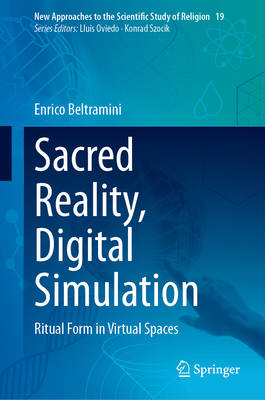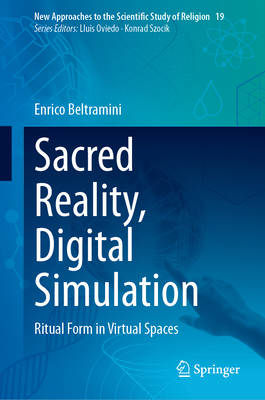
Bedankt voor het vertrouwen het afgelopen jaar! Om jou te bedanken bieden we GRATIS verzending (in België) aan op alles gedurende de hele maand januari.
- Afhalen na 1 uur in een winkel met voorraad
- In januari gratis thuislevering in België
- Ruim aanbod met 7 miljoen producten
Bedankt voor het vertrouwen het afgelopen jaar! Om jou te bedanken bieden we GRATIS verzending (in België) aan op alles gedurende de hele maand januari.
- Afhalen na 1 uur in een winkel met voorraad
- In januari gratis thuislevering in België
- Ruim aanbod met 7 miljoen producten
Zoeken
€ 198,45
+ 396 punten
Omschrijving
This study explores the relationship between the sacred and the virtual, emphasizing the sacred as a divinely dependent, consecrated space activated through ritual, mediating between the profane and the holy. The central argument is that the virtual is fundamentally incompatible with the ritual form--a concept developed by Romano Guardini and others, including Joseph Ratzinger--which holds that the sacred is not merely acknowledged but made present through ritualized actions that require tangible, participatory engagement. Even if the virtual realm were acknowledged as real and retained both the bodily presence of the faithful and the Divine Presence, the rite would still be ineffective. Virtuality prevents the proper enactment of the rite, rendering it ineffective. At its core, the ritual form is performative, embodied, and consecratory. It requires physical presence, material elements, and a structured sequence of gestures, symbols, and words that together make the divine encounter possible. Their absence in virtual spaces disrupts ritual form, compromising its sacramental function.
Specificaties
Betrokkenen
- Auteur(s):
- Uitgeverij:
Inhoud
- Aantal bladzijden:
- 180
- Taal:
- Engels
- Reeks:
- Reeksnummer:
- nr. 19
Eigenschappen
- Productcode (EAN):
- 9783031930454
- Verschijningsdatum:
- 30/07/2025
- Uitvoering:
- Hardcover
- Formaat:
- Genaaid
- Afmetingen:
- 156 mm x 234 mm
- Gewicht:
- 453 g

Alleen bij Standaard Boekhandel
+ 396 punten op je klantenkaart van Standaard Boekhandel
Beoordelingen
We publiceren alleen reviews die voldoen aan de voorwaarden voor reviews. Bekijk onze voorwaarden voor reviews.









